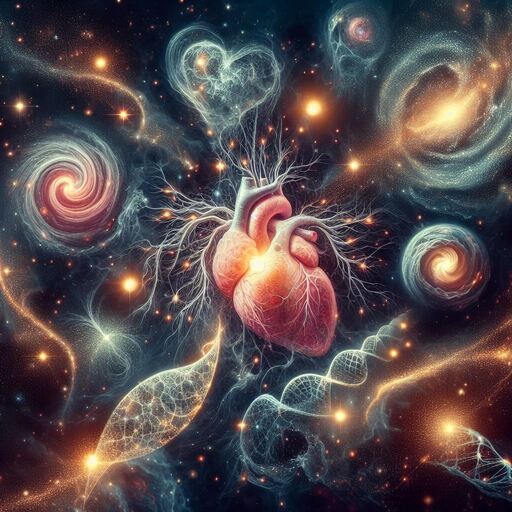Beyond Skin and Bones The Intricate Universe of Human Anatomy
Beyond Skin and Bones The Intricate Universe of Human Anatomy
Human anatomy is far more than just skin and bones; it is a mesmerizing tapestry of interconnected systems and structures that sustain life and enable complex functions. Delving into the depths of human anatomy unveils a world of intricacy, revealing the marvels of our physiological design. In this article, we embark on a fascinating journey to explore the diverse dimensions of human anatomy, transcending the surface to uncover the profound intricacies that define our existence.
The Structural Marvel: Bones and Beyond
While bones provide the framework of our bodies, supporting and protecting vital organs, human anatomy extends far beyond mere skeletal structure. The skeletal system, composed of bones, cartilage, and ligaments, not only provides mechanical support but also serves as a reservoir for minerals such as calcium and phosphorus, crucial for metabolic functions.
Bones are dynamic structures, constantly undergoing remodeling in response to mechanical stress and metabolic demands. They also play a vital role in hematopoiesis, the process of blood cell formation that occurs within the bone marrow. Understanding bone anatomy reveals the adaptive nature of our skeletal system and its integral role in maintaining homeostasis.
Beyond Skin and Bones The Intricate Universe of Human Anatomy
The Dynamic Muscular Machine
Muscles are the engines of movement, responsible for generating force and enabling mobility. The muscular system consists of three types of muscle tissue: skeletal, cardiac, and smooth muscles. Skeletal muscles, attached to bones via tendons, contract and relax to produce voluntary movements such as walking, running, and lifting.
Cardiac muscles form the walls of the heart, facilitating rhythmic contractions that pump blood throughout the body. Meanwhile, smooth muscles, found in the walls of hollow organs such as the intestines and blood vessels, mediate involuntary processes like digestion and blood vessel constriction.
The study of muscular anatomy unveils the remarkable diversity of muscle fibers and their specialized adaptations, underscoring the precision and efficiency of our muscular machine.
The Control Center: Nervous System
At the core of human anatomy lies the nervous system, an intricate network of cells that coordinates and regulates bodily activities. Comprising the brain, spinal cord, and peripheral nerves, the nervous system processes sensory information, initiates motor responses, and facilitates communication between different parts of the body.
Neurons, the functional units of the nervous system, transmit electrical impulses across synapses to convey information. Understanding neuroanatomy elucidates the mechanisms behind sensation, movement, memory, and cognition, offering insights into neurological disorders and potential treatments.
The Lifeline: Cardiovascular System
The cardiovascular system, encompassing the heart, blood vessels, and blood, forms the lifeline of the body, delivering oxygen, nutrients, and hormones to tissues while removing metabolic waste products. The heart pumps oxygen-rich blood to all parts of the body through a network of arteries, veins, and capillaries.
The anatomy of the cardiovascular system highlights the specialized structures and functions of the heart, including valves that ensure one-way blood flow and the conduction system that regulates cardiac rhythm. Exploring cardiovascular anatomy unveils the elegance of circulation and underscores the critical role of this system in maintaining homeostasis.
Beyond Skin and Bones The Intricate Universe of Human Anatomy
The Gateway to Life: Reproductive System
The reproductive system is essential for perpetuating life, encompassing organs specialized for gamete production and fertilization. In males, the testes produce sperm cells, while accessory glands and ducts facilitate the transport and delivery of sperm. In females, the ovaries produce eggs (ova), and the uterus provides a nurturing environment for fetal development.
Understanding reproductive anatomy elucidates the biological basis of human reproduction and contributes to family planning and fertility treatments. It also underscores the interconnectedness of anatomy and physiology in the perpetuation of species.
Integration and Interconnection
Human anatomy is characterized by integration and interconnection, with each system working synergistically to maintain overall health and function. The respiratory system collaborates with the cardiovascular system to deliver oxygen and remove carbon dioxide. The digestive system provides nutrients that fuel cellular activities across the body. The endocrine system secretes hormones that regulate metabolism, growth, and reproduction.
Exploring the interrelationships between anatomical systems unveils the holistic nature of human physiology, highlighting the intricate balance required for optimal health and well-being.
Beyond Skin and Bones The Intricate Universe of Human Anatomy
In Conclusion
Beyond skin and bones, human anatomy reveals a universe of complexity and elegance. From the structural support of bones to the dynamic contractility of muscles, from the orchestrated control of the nervous system to the life-sustaining functions of the cardiovascular system, anatomy embodies the essence of biological organization.
By exploring the intricate details of human anatomy, we gain profound insights into the marvels of our own bodies and the interconnectedness of physiological systems. This journey of discovery not only deepens our appreciation for the intricacies of life but also underscores the importance of anatomical knowledge in advancing medical science and improving human health. Human anatomy truly transcends skin and bones, offering a profound glimpse into the intricate universe that defines us as living beings.
Beyond Skin and Bones The Intricate Universe of Human Anatomy

